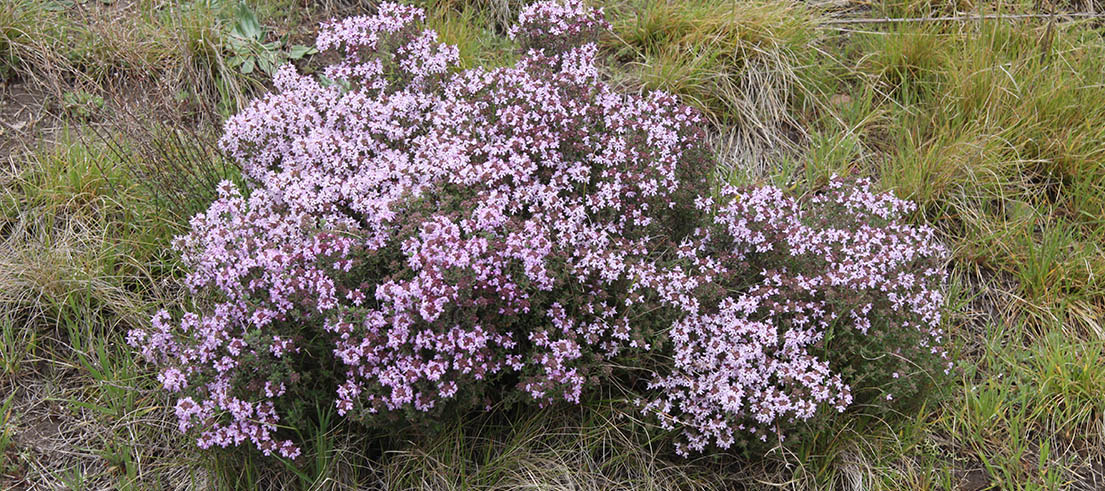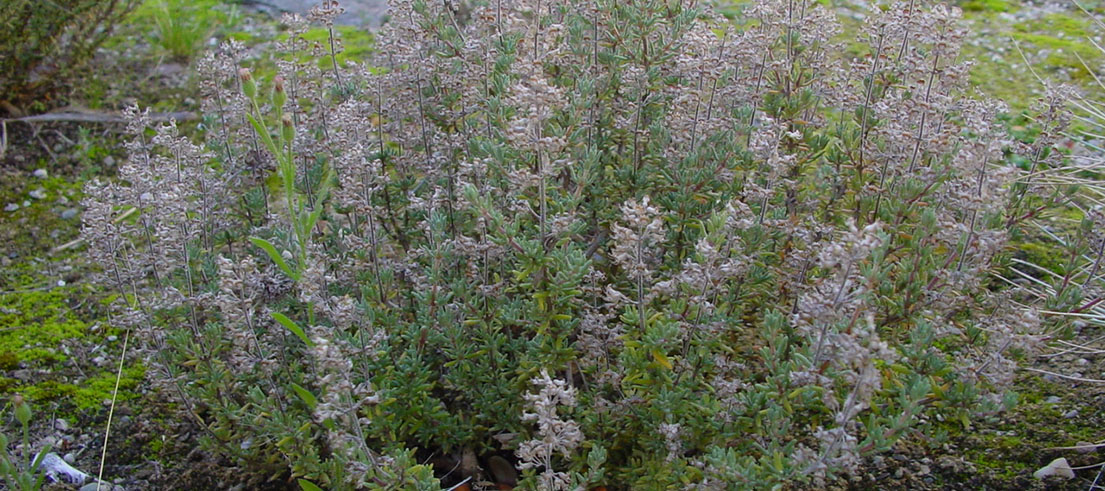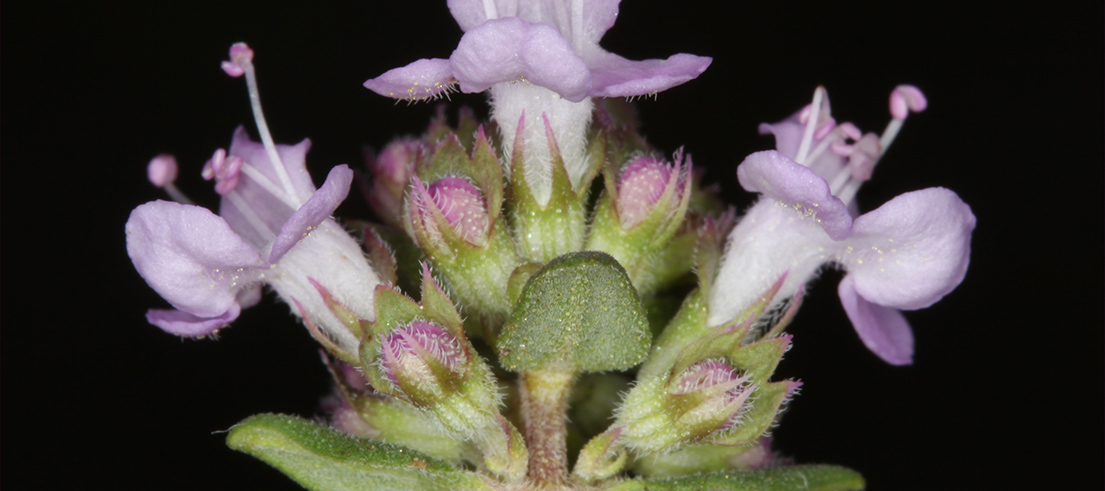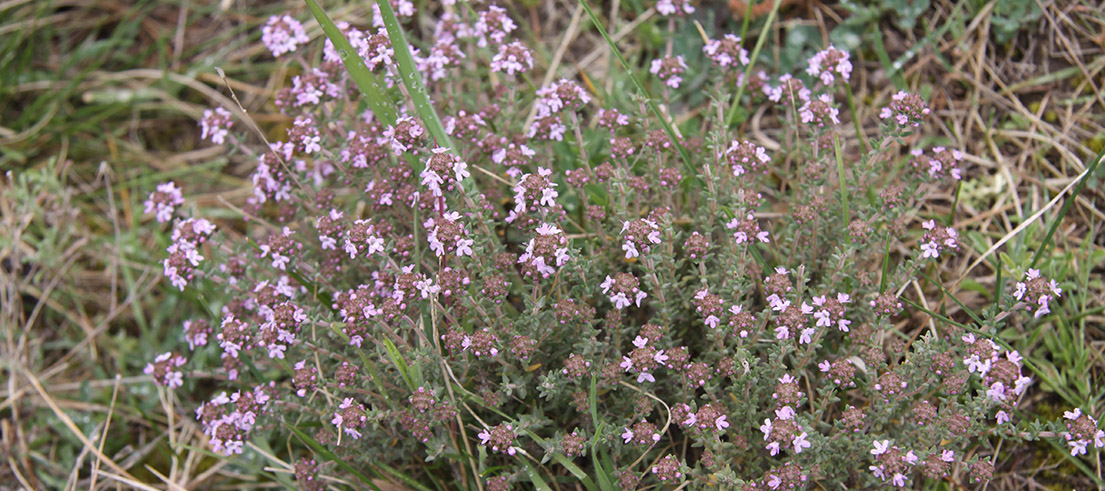Wild thyme is a small, bushy shrub that can grow up to 30cm tall. It flowers from September to December and is unpalatable to stock.
Description
- Narrow, green, hairy leaves are attached to a square, semi-woody stem which, when crushed, produces strong pleasant smell.
- Mauve or white flowers are arranged in whorls on the upper stems.
- Flowering occurs from September to December.
- Seeds are primarily dispersed by gravity, soil movement and people.
- Habitats include dry stony soils, slopes, screes, and terraces.
What you need to know
Unpalatable to stock and can form large dense patches, covering hillsides. It can exclude native vegetation and in turn, becomes the dominant scrub cover.
Management approach
This is a declared pest managed under the Canterbury Regional Management Plan 2018 – 2038 (PDF file, 10.6MB) within a site-led programme.
Site led
Exclude, eradicate, contain, reduce or control a pest within a specific place to the extent that doing so protects the values of that place.
Wild thyme that occurs outside site led areas designated under the Canterbury Regional Pest Management Plan 2018 – 2038 is a land occupier's responsibility and is to be managed via a community led approach.
Rules
Any species declared a pest cannot be sold or be in a place where plants are being sold. Pest plants cannot be propagated, bred, multiplied, communicated, released, caused to be released, or otherwise spread.
Control
Physical control
Grub out plants when in low numbers.
Plant parts for disposal: Seeds.
Disposal options: Contact your local council for appropriate disposal.
Chemical control
No qualifications: 10g metsulphuron/10L nap sack.
Caution: When using any herbicide or pesticide please read the label thoroughly to ensure that all instructions and safety requirements are followed.
Biological control
Biological control is currently not available for this species.












